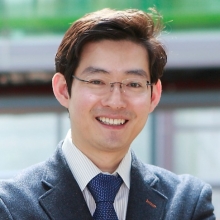Synthesizing crystalline films that neatly arrange themselves

Crystalline structures are ideally composed of repeating identical units in a perfectly ordered fashion. As one would expect, crystals have found applications in a multitude of fields, such as optics, electronics, and chemistry, and have helped researchers understand the mechanics behind complex physical phenomena. However, synthesizing perfect crystalline structures is very challenging, with most methods yielding crystals with defects or with multiple different basic units (called polycrystals).
Hexagonal boron nitride (hBN), also called white graphite, can be synthesized in the shape of crystalline films with the width of a single atom. They have an insulating effect that has found uses in various types of scientific research. However, these films are polycrystalline and not single-crystalline. Therefore, a research team set out to find a method for synthesizing single-crystalline hBN films on a small scale.
The synthesis method they developed consists of letting the thin hBN film self-assemble on top of a liquid gold substrate. Because of the surface tension of liquid gold and the characteristics of its interaction with boron and nitrogen, circular hBN grains form automatically over time. These grains grow to a specific diameter and eventually form a lattice. They can easily rotate when they are about to come into contact with another grain so as to assume the best possible orientation before joining the lattice. A video for this is available too.
The final product of this process is a nearly perfect single-crystalline hBN film, as the team demonstrated in many different experiments and via multiple measurements. A very promising application of such films is using them as a substrate for synthesizing other crystalline thin-film materials on top of them, such as graphene. Their applications go beyond that, as Prof. Kim explains, “We demonstrated that our hBN films can serve as a protecting layer against metal oxidation and as a gas-diffusion barrier for water vapor transmission.”
This innovative synthesis method could be exploited further as well. “Our strategy for the synthesis of single-crystalline hBN films opens a new horizon for the single-crystal growth of other diatomic 2D materials,” explains Prof. Kim. This would make many single-crystalline materials easier to fabricate, allowing them to naturally find a multitude of applications.
Reference
Authors: | Joo Song Lee1,2, Soo Ho Choi3, Seok Joon Yun4, Yong In Kim5, Stephen Boandoh6, Ji-Hoon Park4,5, Bong Gyu Shin4,7,8, Hayoung Ko1,5, Seung Hee Lee2, Young-Min Kim4,5, Young Hee Lee4,5*, Ki Kang Kim6*, Soo Min Kim1* |
Title of original paper: | Wafer-scale single-crystal hexagonal boron nitride film via self-collimated grain formation |
Journal: | Science |
DOI: | 10.1126/science.aau2132 |
Affiliations: | 1Institute of Advanced Composite Materials, Korea Institute of Science and Technology (KIST) 2Applied Materials Institute for BIN Convergence, Department of BIN Fusion Technology and Department of Polymer-Nano Science and Technology, Chonbuk National University 3Department of Physics, Dongguk University-Seoul 4Center for Integrated Nanostructure Physics (CINAP), Institute for Basic Science (IBS) 5Department of Energy Science, Sungkyunkwan University 6Department of Energy and Materials Engineering, Dongguk University-Seoul 7Center for Quantum Nanoscience (QNS), Institute for Basic Science (IBS), Ewha Womans University 8Department of Physics, Sungkyunkwan University
|
The original article can be found here.
About Dongguk University
Dongguk University, founded in 1906, is located in Seoul, South Korea. It comprises 13 colleges that cover a variety of disciplines and has local campuses in Gyeongju, Goyang, and Los Angeles. The university has 1,300 professors who conduct independent research and 18,000 students undertaking studies in a variety of disciplines. Interaction between disciplines is one of the strengths on which Dongguk prides itself; the university encourages researchers to work across disciplines in Information Technology, Bio Technology, Culture Technologys, and Buddhism.
About the author
Dr. Ki Kang Kim received his M.S. and Ph.D. from the Department of Physics of Sungkyunkwan University, Republic of Korea, in 2008 under the supervision of Prof. Young Hee Lee. After completing his postdoctoral studies under the supervision of Prof. Jing Kong at Massachusetts Institute of Technology, USA, he joined the Department of Energy and Materials Engineering at Dongguk University in Republic of Korea in 2012 as an assistant professor. His current research interests include the synthesis of 2D materials and engineering the electronic structure of low-dimensional materials.
Comments
You're looking to give wings to your academic career and publication journey. We like that!
Why don't we give you complete access! Create a free account and get unlimited access to all resources & a vibrant researcher community.












